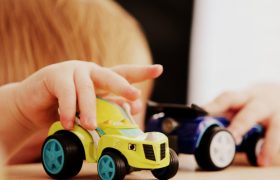Why your Child Displays Cruelty Towards Animals?

Since the 1970s, research has been consistently reporting childhood cruelty towards animals. It is considered to be one of the first signs of violent and criminal behavior later on in adult life. Almost all violent criminals have a history of animal abuse on their records. The Boston Strangler, Albert DeSalvo who was sentenced for strangling and killing women, used to shot arrows and trap dogs and cats in his childhood. Eric Harris and Dylan Klebold, the Columbine shooters bragged about the mutilation of animals while stating they were doing it for fun.
Sometimes it is strangling animals, pulling their tails and legs off, sitting on them or drowning them. Parents and siblings usually find this behavior very upsetting and try to understand why it’s done. We will try and answer some dilemmas like when is the time to start worrying or if your child has tendencies for something bigger than animal cruelty.
Motivation
Children which are cruel to animals have been a witness of abuse or experienced some form of abuse in their lives. Statistics show that 30 percent of children who have seen domestic violence will act out the same type of violence towards a pet. The correlation between animal cruelty and interpersonal violence is high and that is why many communities in the United States are starting to train social services and animal control agencies. They teach employees how to discover the signs of animal cruelty as possible risks for children that could develop into other abusive behaviors.
Childhood and teenage motives for animal cruelty have not been very well researched and currently, interviews are suggesting a few developmentally related motives.
- Curiosity and exploration of the animal killed in the process are usually examined by a young or developmentally delayed child.
- The pressure to join a gang from their peers might require animal abuse as part of the initiation rite of passage
- Mood enhancement relieves boredom or depression
- Beastiality or sexual gratification
- Forced abuse by an adult on a child to hurt an animal
- Attachment – the child feels he or she has to kill the animal to prevent torture from another person
- Fears from some animals cause some children to attack them
- Identifying with a child’s abuser meaning the victimized child may try to regain a sense of power by victimizing a vulnerable animal
- PTSD plays as in reenacting violence using the animal as the victim
- Imitating another adult’s cruelty towards animals
- Self-injury using an animal to cause injury on the child’s body
- Rehearsing violence on stray animals or pets before using violent acts against human beings
- Injuring a sibling’s pets for emotional scare tactics
Types of abusers
Animal abusers have not been classified in types, however; it may help to look at these guidelines if you are trying to find out whether or not your child has a serious problem.
 The Experimenter
The Experimenter
Age 1 to 6 and developmentally delayed. This is usually a preschool child who is not cognitively mature enough to understand that animals have feelings and are not toys. This might be the child’s first interaction with a pet and the child doesn’t have enough skills or experience on how to care for different animals.
What can be done?
This depends on the kid’s age and their development phase. In addition, parents have to explain that animal cruelty is not ok just like hitting or hurting another person is not ok. Teachers, parents, and family need to make it clear that animals are our friends and we should take care of them, show love and respect towards them.
Cry for help abuser
Around the ages 6-12, kids should already understand that hurting animals is not a good behavior. If they don’t understand this, it is not because they are not well educated, but maybe their actions have a deeper psychological problem. Problems like sexual abuse, violent abuse at their homes or school are related to animal cruelty.
What can be done?
Get professional help because this is not a usual behavior for an intelligent child.
The Conduct-Disordered abuser
Age 12+
Teenagers who abuse animals usually tend to be anti-social, engage in the abuse of substances, violence and gang activities. The ones who are abusing the animals usually are doing this in order for gang initiation and peer pressure plays a big role in this. Other times boredom might be the cause of this kind of behavior.
What can be done?
Get professional help for your child immediately. Ask your family and friends for support and even their teachers if you possibly can.
 Conclusion
Conclusion
Not all acts of violence mean that your child is going to become a criminal later in life. Especially if this is a young child, whose natural curiosity can cause disturbing experiences for parents and their pets. It’s ok to be lenient on an occasional bad choice in judgment. Remember to continue to teach your child about the humane way to treat animals.
Some red flags you need to look out for are children that enjoy watching the animal get hurt, trapping the pets in a small space, or hurting the animals after a fight with the parents. This is when you know that you should seek out professional help. This should really be concerning to parents when you know your child is intelligent and has the correct maturity level to understand that what they are doing is not an acceptable behavior. If the child keeps repeatedly hurting animals and knows this is bad no matter what the consequences are, then the child needs immediate help. Don’t be afraid to reach out to a professional. Many professionals can get your child in for an appointment relatively quickly and look for support groups for yourself and spouse if the acts are particularly gruesome. This doesn’t mean you are a bad parent but something traumatic might have happened that you know about or you don’t know about and your child is acting out. The death of a parent, divorce, domestic violence, stress, and many more factors can influence your child more than you realize. Parents can’t get into the minds of their children but sometimes you don’t realize how truly sensitive and emotional your child really is. When a child blames themselves for something that happened, they act out in anger but there is always sunshine after the rain. You will always find someone to help your child if you call a professional.






